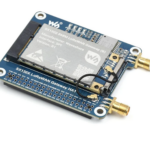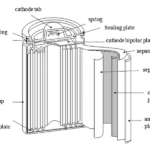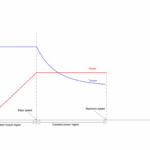This project aims to build an adjustable 0 to 15V 1A power supply circuit. The circuit will work as a portable mini power supply for most of the electronic gadgets. The circuit could be used as power adaptor for smartphones, wearables, and computer gadgets. In this project, an adjustable regulated symmetrical positive power supply is designed. For reducing any fluctuation and ripples at the output the supply needs to be regulated so that it can provide a constant voltage at the output. Again like previous projects, the voltage is adjusted using a variable resistor. This power supply provides regulated as well as the adjustable voltage at the output.
The circuit will input 220V-230V AC and generates a variable DC voltage in the range of 0V to 15V at the output. This power supply can provide a maximum current of 1A at the output.
The design of a power supply circuit is a step by step process involving stepping down AC voltage, converting AC voltage to DC voltage, Smoothing DC voltage, Compensating transient currents, Voltage regulation, Voltage variation and Short circuit protection.
Components Required –
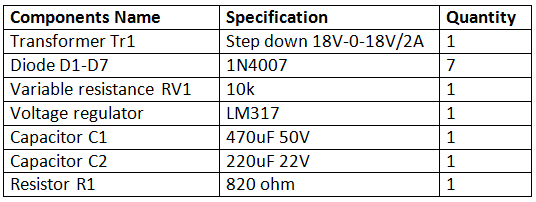
Fig. 1: List of Components required for Adjustable 0 to 15V 1A Mini Power Supply
Block Diagram –

Fig. 2: Block Diagram of Adjustable 0 to 15V 1A Mini Power Supply
Circuit Connections –
The circuit is assembled in stages with each stage serving a specific purpose. For stepping down the 230 V AC, an 18V – 0 -18V transformer is taken. One end of the secondary coil of the transformer and center tape of it are connected with a full-bridge rectifier. The full bridge rectifier is built by connecting four 1N4007 diodes to each other designated as D1, D2, D3 and D4 in the schematics. The cathode of D1 and anode of D3 is connected to one of the secondary coil and cathode of D2 and anode of D3 is connected to the center tape. The cathodes of D2 and D4 are connected from which one terminal is taken out from the output of rectifier and anodes of D1 and D3 are connected from which other terminal is taken out from the output from full-wave rectifier.
A capacitor of 470 uF (shown as C1 in schematics) is connected between the output terminals of a full-wave rectifier for smoothing purpose. For voltage regulation, LM317 is connected in parallel to the smoothing capacitor. A variable resistance is connected in series to the voltage regulator IC for voltage adjustment and capacitor of 220 uF (shown as C2 in schematics) is connected in parallel at the output for compensating transient currents. There is a diode connected between the Input voltage and output voltage terminals of the voltage regulator IC for short circuit protection.
Get the schematic diagram drawn or printed on a paper and make each connection carefully. Only after checking each connection made correctly, plug in the power circuit to an AC supply.
How the circuit works –
The power circuit operates in well-defined stages with each stage serving a specific purpose. The circuit operates in the following stages –
1. AC to AC Conversion
2. AC to DC Conversion – Full Wave Rectification
3. Smoothing
4. Compensation of Transient Current
5. Voltage Regulation
6. Voltage Adjustment
7. Short Circuit Protection
AC to AC conversion
The voltage of Main Supplies (Electricity fed by the intermediate transformer after stepping down line voltage from generating station) is approximately 220-230V AC which further needs to be stepped down to 15V level. To reduce the 220V AC to 15V AC, a step-down transformer with center taping is used. The use of center tap transformer allows to generate both positive and negative voltage at the input, however, only positive voltage will be drawn from the transformer. The circuit takes some drop in the output voltage due to resistive loss. Therefore a transformer of high voltage rating greater than the required 15 V needs to be taken. The transformer should provide 1A current at the output. The most suitable step-down transformer that meets the mentioned voltage and current requirements is 18V-0-18V/2A. This transformer step downs the main line voltage to +/-18V AC, as shown in the below image.
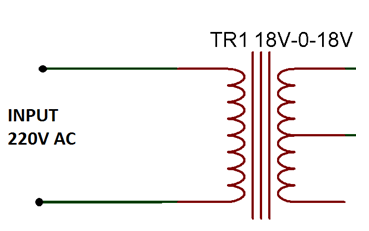
Fig. 3: Circuit Diagram of 18-0-18V Transformer
AC to DC conversion – Full Wave Rectification
The stepped down AC voltage needs to be converted to DC voltage through rectification. The rectification is the process of converting AC voltage to DC voltage. There are two ways to convert an AC signal to the DC one. One is half wave rectification and another is full wave rectification. In this circuit, a full-wave bridge rectifier is used for converting the 36V AC to 36V DC. The full wave rectification is more efficient than half wave rectification since it provides complete use of both the negative and positive sides of AC signal. In full wave bridge rectifier configuration, four diodes are connected in such a way that current flows through them in only one direction resulting in a DC signal at the output. During full wave rectification, at a time two diodes become forward biased and another two diodes get reverse biased.
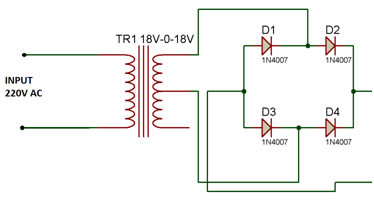
Fig. 4: Circuit Diagram od Full Wave Rectifier
During the positive half cycle of the supply, diodes D2 and D3 conduct in series, while diodes D1 and D4 are reverse biased and the current, flows through the output terminal passing through D2, output terminal and the D3. During the negative half cycle of the supply, diodes D1 and D4 conduct in series, but diodes D3 and D2 are reverse biased and the current flows through D1, output terminal and the D4. The direction of current both ways through the output terminal in both conditions remain the same.
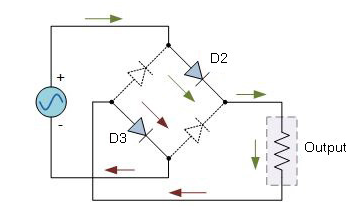
Fig. 5: Circuit Diagram showing positive cycle of Full Wave Rectifier
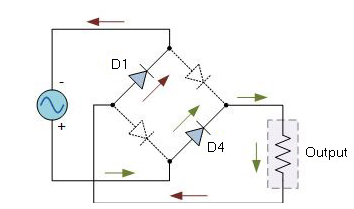
Fig. 6: Circuit Diagram showing negative cycle of Full Wave Rectifier
The 1N4007 diodes are chosen to build the full wave rectifier because they have the maximum (average) forward current rating of 1A and in reverse biased condition, they can sustain peak inverse voltage up to 1000V. That is why 1N4007 diodes are used in this project for full wave rectification.
Smoothing
As the name suggests it is the process of smoothing or filtering the DC signal by using a capacitor. The output of the full-wave rectifier is not a steady DC voltage. The output of the rectifier has double the frequency of main supplies but contains ripples. Therefore, it needs to be smoothed by connecting a capacitor in parallel to the output of full wave rectifier. The capacitor charges and discharges during a cycle giving a steady DC voltage as the output. So, a capacitor (shown as C1 in schematics) of high value is connected to the output of rectifier circuit. As the DC which is to be rectified by the rectifier circuit has many AC spikes and unwanted ripples, so to reduce these spikes capacitor is used. This capacitor acts as a filtering capacitor which bypasses all the AC through it to ground. At the output, the mean DC voltage left is smoother and ripple free.
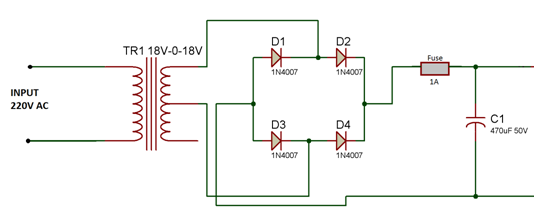
Fig. 7: Circuit Diagram of Smoothing Capacitor
Compensating Transient Currents
At the output terminals of the power circuit, a capacitor ( shown as C2 in schematics) is connected in parallel. This capacitor helps in fast response to load transients. Whenever the output loads current changes then there is an initial shortage of current, which can be fulfilled by this output capacitor.
The output current variation can be calculated by
Output current ,Iout = C (dV/dt) where
dV = Maximum allowable voltage deviation
dt = Transient response time
Considering dv = 100mV
dt = 100us
In this circuit a capacitor of 220 uF is used so,
C = 220uF
Iout = 220u (0.1/100u)
Iout = 220mA
This way it can be concluded that output capacitor will respond for 220mA current change for a transient response time of 100 us.
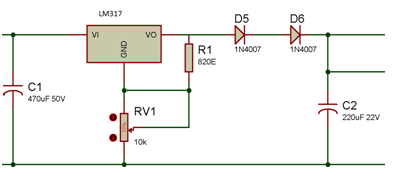
Fig. 8: Circuit Diagram of Transient Current Compensator
Voltage Regulation
The power circuit should provide regulated and constant voltage without any fluctuation or variation. For voltage regulation, a linear regulator is needed in the circuit. The aim of using this regulator is to maintain a constant voltage of a desired level at the output. For providing a regulated 0V to 15V, LM317 IC is used. The voltage regulator IC is capable of providing a current of 1.5A, so is well suited for the current requirement of 1A. In this circuit, LM317 will provide an adjustable voltage corresponding to its input voltage. The IC is capable of load regulation by itself. It provides a regulated and stabilized the voltage at the output irrespective of the fluctuation in the input voltage and load current.
LM317 is a positive voltage regulator which gives output in the range of 1.25V to 37V with input voltage up to 40V. At the output, it can provide a maximum current of 1.5A as per the datasheet under the optimum conditions.
For setting a desired voltage at the output, resistive voltage divider circuit is used between the output pin and the ground (center tape of the transformer). The voltage divider circuit has one programming resistor (fixed resistor) and another a variable resistor. By taking a perfect ratio of feedback resistor (fixed resistor) and a variable resistor, desired value of output voltage corresponding to the input voltage can be obtained. In this circuit, the R1 resistance is used as a programming resistance for LM317. The variable resistances RV1 is used to vary the output voltage at the voltage regulator IC.
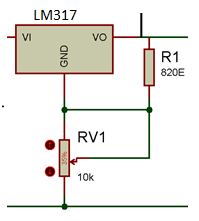
Fig. 9: Circuit Diagram of LM317 IC based Voltage Regulator
The LM317 has the following internally tolerable power dissipation –
Pout = (Maximum operating temperature of IC)/ (Thermal Resistance, Junction−to−Ambient + Thermal Resistance, Junction−to−case)
Pout = (150) / (65+5) (values as per the datasheet)
Pout = 2W
Therefore, LM317 internally can sustain up to 2W power dissipation. Above 2W, the IC will not tolerate the amount of heat generated and will start burning. This can cause a serious fire hazard also. So heat sink is needed to dissipate the excessive heat from the IC.
Voltage Adjustment
The output voltage can be varied by using the adjust pin of LM317 IC. The variable resistor RV1 is used for varying the voltage at the output from 0V to 15V. As the minimum output of LM317 is 1.25V, so two 1N4007 diodes are connected in series with a 1K resistor (shown as R2 in schematics) to make the minimum output near to 0V. Each diode takes a drop of 0.7V and remaining drop is taken by the 1k resistor. Hence at the output, a minimum voltage of 0.3V and a maximum voltage of 15.35V is obtained.
Short Circuit Protection
A diode D7 is connected between the voltage input and voltage output terminals of 317 IC, so that it can prevent the external capacitor from discharging through the IC during an input short circuit. When the input is shorted then the cathode of the diode is at ground potential. The anode terminal of the diode is at high voltage since C2 is fully charged. Therefore in such a case, diode is forward biased and all the discharging current from capacitor passes through diode to the ground. This saves the LM317 IC from the back current.
In the circuit, two diodes are already connected in series at the output which prevents the IC from the back current. Hence it is not necessary to connect a protection diode in this circuit, still connecting a protection diode across voltage regulator just provide extra layer of safety.
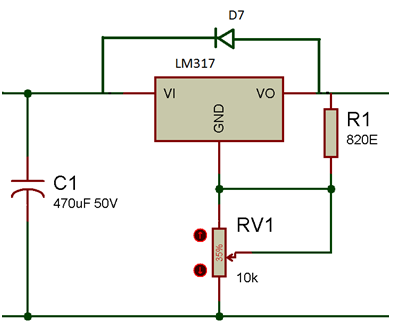
Fig. 10: Circuit Diagram of Short Circuit Protection
Testing and Precautions –
The following precautions should be taken while assembling the circuit –
• The current rating of the step-down transformer, bridge diodes and voltage regulator ICs must be greater than or equal to the required current at the output. Otherwise, it will be unable to supply the required current at the output.
• The voltage rating of the step-down transformer should be greater than the maximum required output voltage. This is due to the fact that, the 317 IC take voltage drop of around 2 to 3 V. Thus input voltage must be 2V to 3V greater than the maximum output voltage and should be in the limit of the input voltage of LM317.
• The capacitors used in the circuit must be of higher voltage rating than the input voltage. Otherwise, the capacitors will start leaking the current due to the excess voltage at their plates and will burst out.
• A capacitor should be used at the output of rectifier so that it can handle unwanted mains noise. Similarly Use of a capacitor at the output of the regulator is recommended for handling fast transient changes and noise at the output. The value of output capacitor depends on the deviation in the voltage, current variations and transient response time of the capacitor.
• A protection diode should always be used while using a capacitor after a voltage regulator IC, for preventing the IC from back current while discharging of the capacitor
• For driving the high load at the output, heat sink should be mounted at the holes of the regulator. This will prevent the IC from blowing off due to heat dissipation.
• As the regulator IC can draw current up to 1A only, a fuse of 1A needs to be connected. This fuse will limit the current in the regulator up to 1A. For current above 1A, the fuse will blow off and this will cut the input supply from the circuit. This will protect the circuit and regulator ICs from current greater than 1A.
Once the circuit is assembled, it’s time to test it. Plug in the circuit to main supplies and change variable resistance. Take the voltage and current readings at the output terminal of the power circuit using a multimeter. Then connect fixed resistances as load and check the voltage and current readings again.
At the output terminals input voltage was 18V and on adjusting the variable resistance, the output voltage read between 0.34 to 15.35V when no load was connected. The expected values were 0V to 15V. Therefore the percentage error comes out to be –
%Error= (Experimental value–expected value)*100/Expected value
% Error = (15.35 – 15)* 100 / 15
% Error = 2.3%
When a load is connected at the output the maximum voltage is read 15.35V. With a load of 470Ω resistance, the output voltage is read 15.35 V showing no voltage drop. The output current is measured 38.2 mA so the power dissipation at load of 470Ω resistance is as follow –
Pout = (Vin – Vout)*Iout
Pout = (18-15.35) *(0.0328)
Pout = 86 mW
With a load of 47Ω resistance, the output voltage is read 15V showing a voltage drop of 0.35 V. The output current is measured 310 mA so the power dissipation at load of 47Ω resistance is as follow –
Pout = (Vin – Vout)*Iout
Pout = (18-15) *(0.310)
Pout = 0.93W
With a load of 14.1Ω resistance, the output voltage is read 13V showing a voltage drop of 2.35 V. The output current is measured 870 mA so the power dissipation at load of 14.1Ω resistance is as follow –
Pout = (Vin – Vout)*Iout
Pout = (18-13) *(0.870)
Pout = 4.35W
During testing of the circuit, it was found that when current demand increases at the output then the output voltage starts reducing. As the current demand increases, 317 IC start heating up and IC take more drop across it which reduces the output voltage. As from the above practical experience, power dissipation in the IC is found greater than its internal tolerable limits. So it is recommended to use a heat sink to aid cooling the IC and to increase the lifespan of it.
The power supply circuit designed in this project can be used as a portable power adaptor for common electronic gadgets and devices. It can also be used as power station for electronic circuits and component testing.
You may also like:
Circuit Diagrams
Filed Under: Tutorials

